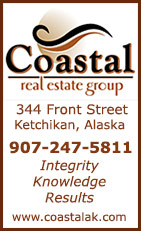|
Fish Factor Less Boots on Deck and Fisheries Jobs Lost Over Past 5 YearsBy LAINE WELCH November 23, 2020
A snapshot of fish harvesting jobs is featured in the November edition of Alaska Economic Trends by the state Dept. of Labor. The findings show that after hitting a peak of 8,501 harvesters in 2015, fishing jobs then fell to around 8,000 for the next two years before dropping again in 2018 to about 7,600. In 2019, average monthly fishing employment was 7,653 and the industry added just 33 fishing jobs all year, reflecting growth of about 0.4 percent. Estimated gross earnings in 2019 totaled over $1.7 billion, of which only about $660 million went to permit holders who were Alaska residents; the bulk went to fishermen who call Washington home. Alaska’s salmon fisheries, which represent the most workers on deck, added 93 harvesters in 2019 but remained below the five year average of 4,472 jobs. Crab harvesting followed a similar trend, gaining 26 jobs in 2019 but remaining below the fishery’s five-year average by 21 jobs. That drop is the largest in percent terms by species since 2015: a loss of nearly a quarter of that workforce. Halibut harvesting gained just three jobs last year at 1,071, hovering below its five-year average by 28 fishing jobs, a 2.6 percent decline. Sablefish (black cod) was the only other category to add jobs over the five years by 22, settling in at a yearly average of 646 black cod fishermen. Two fisheries lost jobs last year – herring and groundfish, which has dropped fishing participants nearly every year since 2015. Kodiak, for example, is one of Alaska’s top groundfish ports, and lost one-fifth of its harvester jobs (162) over five years, due in great part to reduced fishing of cod. By region, the Yukon Delta shed the largest share of fishing jobs due to poor salmon seasons. Last year’s 170 Yukon fishing participants was a 55 percent drop from 2015. Bristol Bay lost just 11 fishing jobs over five years, a decline of 0.7 percent. Four regions - Southeast, Southcentral, Kodiak and the Aleutians - added jobs last year but haven’t regained their 2015 highs. Harvester jobs are tricky to calculate because fishermen are considered self-employed. Labor economists infer jobs in a given month from fish landings, and because fishing permits are tied to specific gears and boat sizes, they can roughly estimate how many people are on the job averaged across a year. The November Trends also features processing seafood in Alaska during a pandemic and the state’s deflation statistics. “Alaska’s economy began to shut down in March due to COVID-19 and remains weak…of all the nation’s consumer price indexes generated at the state or city level, Alaska’s is the only one showing consistent overall deflation this year. The reasons aren’t yet clear, and it will take time to know whether it’s a temporary aberration, especially if the economy rebounds with any vigor,” wrote DOL economist Neal Fried. Toppled Markets: Tamped down prices due to toppled markets caused by the Covid virus combined with low salmon returns to many Alaska regions added up to reduced paychecks for fishermen and will mean lower tax revenues for fishing communities. A summary of the preliminary harvests and values by the Alaska Dept. of Fish and Game shows that Alaska’s total 2020 salmon catch came in at just under 117 million fish, a 44% decrease from last season’s haul of 208.3 million fish, and the 13th lowest on record. The statewide salmon value of $295.2 million is a whopping 56% decrease from 2019’s $673.4 million, and when adjusted for inflation, it is the lowest value since 2006. Sockeyes accounted for nearly 59% of Alaska’s total salmon value at $174.9 million and comprised 40% of the harvest at 46.1 million fish. Pinks accounted for 51% of the statewide salmon harvest at 51.4 million and 21% of the value at $61.8 million. Regional tallies compared to the 2019 catches and values reveal a clearer picture of the economic hits, which are down by half or more across the board. At Southeast Alaska, 14.3 million salmon crossed the docks valued at just over $50 million to fishermen. That compares to a catch of 32.2 million fish last year paying out at $101.8 million. Prince William Sound fishermen fetched $49.6 million for salmon catches totaling 25.5 million this year, down from 57.7 million fish valued at just under $115 million last season. At Cook Inlet, a catch of 3.6 million salmon rang in at just over $10 million, down by 4.3 million fish and $22.9 million, respectively. A huge haul of pinks pushed Kodiak’s salmon catch to over 24 million with a dockside value of $26.6 million. That’s well below the value of $47 million last year on a harvest of 35.7 million fish. Chignik fishermen were beached all season for a fishery value of zero. That compares to 2019 values of 3.5 million sockeyes harvested, worth just over $8 million. At Bristol Bay, a catch of just over 40 million salmon was valued at $140.6 million to fishermen, down from 44.4 million fish and a record payday of $306.5 million in 2019. At the Alaska Peninsula, the salmon value came in at $16.6 million this summer on a harvest of 8.7 million fish, compared to $49 million on landings of nearly 27 million salmon last year. Fishermen on the Kuskowkim finally went fishing after being shut out since 2016 when the region’s “community development” non-profit abruptly pulled the plug on buying salmon. A newly formed Quinhagak co-op of four villages landed 197,365 salmon this summer (mostly sockeyes) worth $596,272. Salmon fishermen on the Yukon took under 19,000 fish of mostly chums, valued at $51,444 for a summer harvest only. That compares to 561,644 fish valued at over $2 million for summer and fall fisheries in 2019. At Norton Sound, only 50,679 salmon were caught this summer worth under $300,000 to fishermen. That compares to 381,124 fish valued at over $2 million last year. Kotzebue salmon fishermen landed 149,820 chums this summer for a payout of $542,306. Last year’s catch of 493,340 salmon was valued at over $1.5 million. Looking at average salmon prices paid to fishermen compared to 2019: Chinook averaged $5.07 a pound compared to $4.48, sockeyes averaged $0.76 down from $1.45; cohos averaged $1.17, down just 2 cents per pound, the average pink price of $0.30 was the same as last year, and the average dock price for chums at $0.43 was a drop of 6 cents a pound from 2019. It’s important to note that the dollar values for all salmon catches are preliminary and do not include post-season price adjustments. Some salmon facts: 95 percent of wild salmon eaten by Americans comes from Alaska, but Alaska salmon provides only about 13 percent of the global supply. Farmed salmon production outnumbers wild harvests by nearly 3 to1. Offshore fish farms advance - Two U.S. regions have been selected as Aquaculture Opportunity Areas (AOAs) as part of the Trump Administration’s executive order in May “Promoting American Seafood Competitiveness and Economic Growth” in waters from three to 200 miles offshore. The two regions are in the Gulf of Mexico and off Southern California and are the first of 10 sites that NOAA’s Aquaculture Program is tasked with identifying over the next five years. The AOAs will use existing infrastructure, such as docks, processing plants, and transportation routes in selected regions to create new sustainable economic opportunities, said Danielle Blacklock, director of NOAA Fisheries’ Office of Aquaculture, at a recent SeafoodSource webinar. “We’re looking for places that are appropriate in multiple different ways – they need to be appropriate environmentally or ecologically, meaning that areas have the right kind of current flow, the right depth, but they also need to be appropriate socially so we’re looking to minimize user conflict,” Blacklock explained. “We’re not going to be in shipping lanes and we’re looking to stay out of traditional fishing grounds. And we’re also trying to make sure that they are economically appropriate, meaning that they are close enough to a port that landing their harvest is not too much of a challenge.” There is no predetermined size for an AOA and they could vary depending on what species of fish, shellfish and seaweeds are being grown. And while the areas are planned for waters that fall under federal jurisdiction, Blacklock said NOAA hopes to also collaborate with states for opportunities in their regions. The state of Washington got onboard with NOAA Aquaculture a few years ago and it helped drive shellfish development on the west coast, said Paul Doremus, Chief Operating Officer for NOAA Fisheries. He believes that could have some appeal for Alaska, which has banned fish farming since the 1980s. “There is a very vibrant mariculture industry in Alaska and an enormous amount of interest in seaweed production and various mollusks and shellfish,” Doremus said. “This also is a path to diversifying the seafood sector and something that a lot of folks in Alaska are very excited about. They are not excited about finfish so that is unlikely to happen.” The public can comment through December 22 on the Aquaculture Opportunity Areas being selected. Halibut hauls: Alaska’s eight-month Pacific halibut fishery ended on November 15 and just a few days later, stakeholders were to get an overview of the health of the stock and a glimpse at potential catches for next year. The total halibut catch limit for 2020, which includes Alaska, the West Coast states and British Columbia, totaled 35.5 million pounds. Alaska’s share was17.1 million pounds, of which 93% (15.9 million pounds) was landed. A breakdown by the International Pacific Halibut Commission shows that 64% of the catch went to the commercial fishing sector, 17% to recreational users, 3% for subsistence users and 14% went to “non-directed fisheries,” meaning halibut caught and discarded as bycatch. Discarded halibut in 2020 is estimated at just over 5 million pounds, down from 6.56 million in 2019, nearly all of which was taken in Alaska non-halibut fisheries (4.68 million pounds). Much more was revealed at the Nov. 18-19 interim online meeting of the IPHC, which already has posted a plethora of documents for review. Of note are the results of the successful summer “Fishery-Independent Setline Survey” at 898 stations that indicates some hopeful upticks. “Available views allow users to interactively review the raw and adjusted (for hook competition and timing) results from 2020 and prior years with an ability to drill down and track differences among areas and across years,” said Dr. David Wilson, IPHC Executive Director. He noted the catch-per-unit-effort data (per hook) at: https://www.iphc.int/data/FISS-catch-per-unit-effort . Final halibut catch limits will be set at the IPHC annual meeting Jan. 25-29 which also will be online due to Covid concerns. The deadline to submit regulatory proposals is December 26.
SitNews ©2020 Stories In The News Ketchikan, Alaska
|
||||





